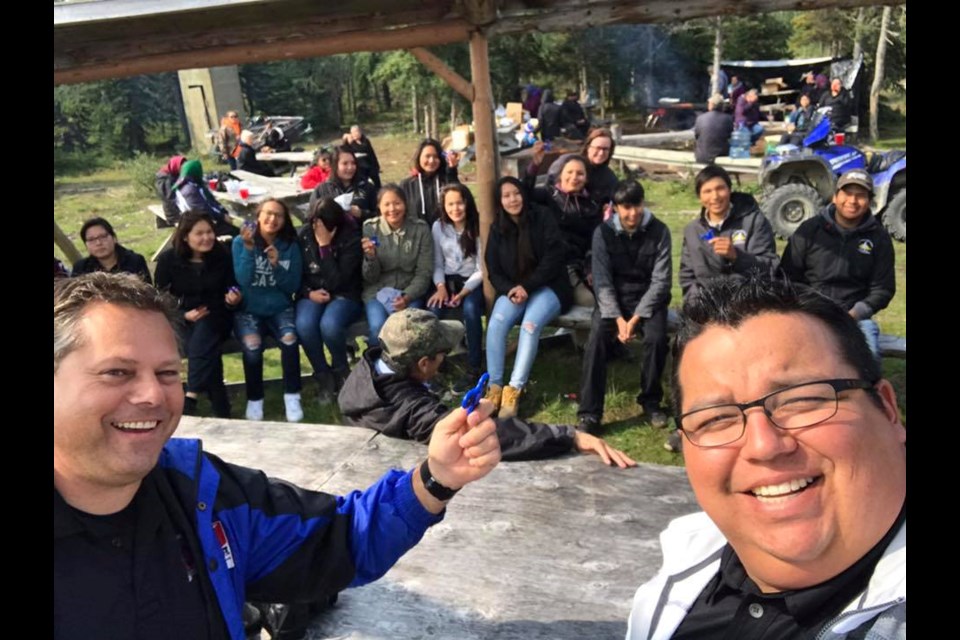THUNDER BAY – It’s been a busy week for Sgt. Greg Stein and Const. Bob Simon.
The two Thunder Bay Police Service officers spent the week visiting three remote Northwestern Ontario Indigenous communities, meeting with leaders, community members and youth that are preparing to move to the city for education in a trip organized by Keewaytinook Okimakanak.
“We were welcomed with open arms. The chiefs, band councillors and community members saw us as partners, not just as the police but certainly as partners and as protectors of their children and people that wanted to see their children succeed,” Stein said.
The pair were well travelled across the region, first making their way to Keewaywin and Deer Lake First Nations before heading to Fort Severn First Nation, the northernmost community in Ontario on the shores of Hudson Bay.
“It was incredible with the reception. It was just amazing. It meant a lot to me as a person and as a police officer. It feels like we’re moving in a positive direction in connecting with the community members when we head up north for these community visits,” Simon said.
“It just adds a personal touch to the parents and elders and the rest of the community to see police are coming up and introducing themselves.”
The northern trips, where officers have visited six different communities, are an effort by Thunder Bay police to meet with students who will be coming to the city before they arrive to introduce themselves and share some advice on how to stay safe.
The city police force was assessed a B+ grade for its first year response to recommendations from the seven youth inquest, in a report card prepared by lawyers representing six of the seven families. Aboriginal Legal Services lawyer Jonathan Rudin specifically highlighted the visits to remote First Nations communities as an example of progress when he discussed the police service’s grade.
From encouraging the youth to dedicate themselves to their education, while also pursuing extracurricular activities, Simon said the message to the students is fairly simple.
“Make good choices. Always be safe. These kids are coming out from a community where everybody takes care of each other,” Simon said.
“Knowing these kids are coming out from a remote northern community, it’s scary for them. They have that choice and so much freedom coming to Thunder Bay or Sioux Lookout they can veer off very easily and it can lead to unfortunate circumstances.”
For students coming from remote communities with just a few hundred people, even something like crossing the street at an intersection with traffic lights can be a brand new experience.
The interactions help bridge the gap between Indigenous communities and police and Stein said it’s important for the students to see officers as more than just authority figures.
“Just because we are police officers, it doesn’t mean we have to be spoken to or be a resource just in a typical policing role where someone gets into trouble,” Stein said.
“In my case, I’ve lived here my entire life and have knowledge of a lot of people and resources in the community. We either have knowledge of someone who’s in a resource of someone who can find a resource. If there’s anything at all they need when they’re in Thunder Bay, say they want to get involved in some sporting activity or arts and crafts, we can likely put them in the right direction.”
